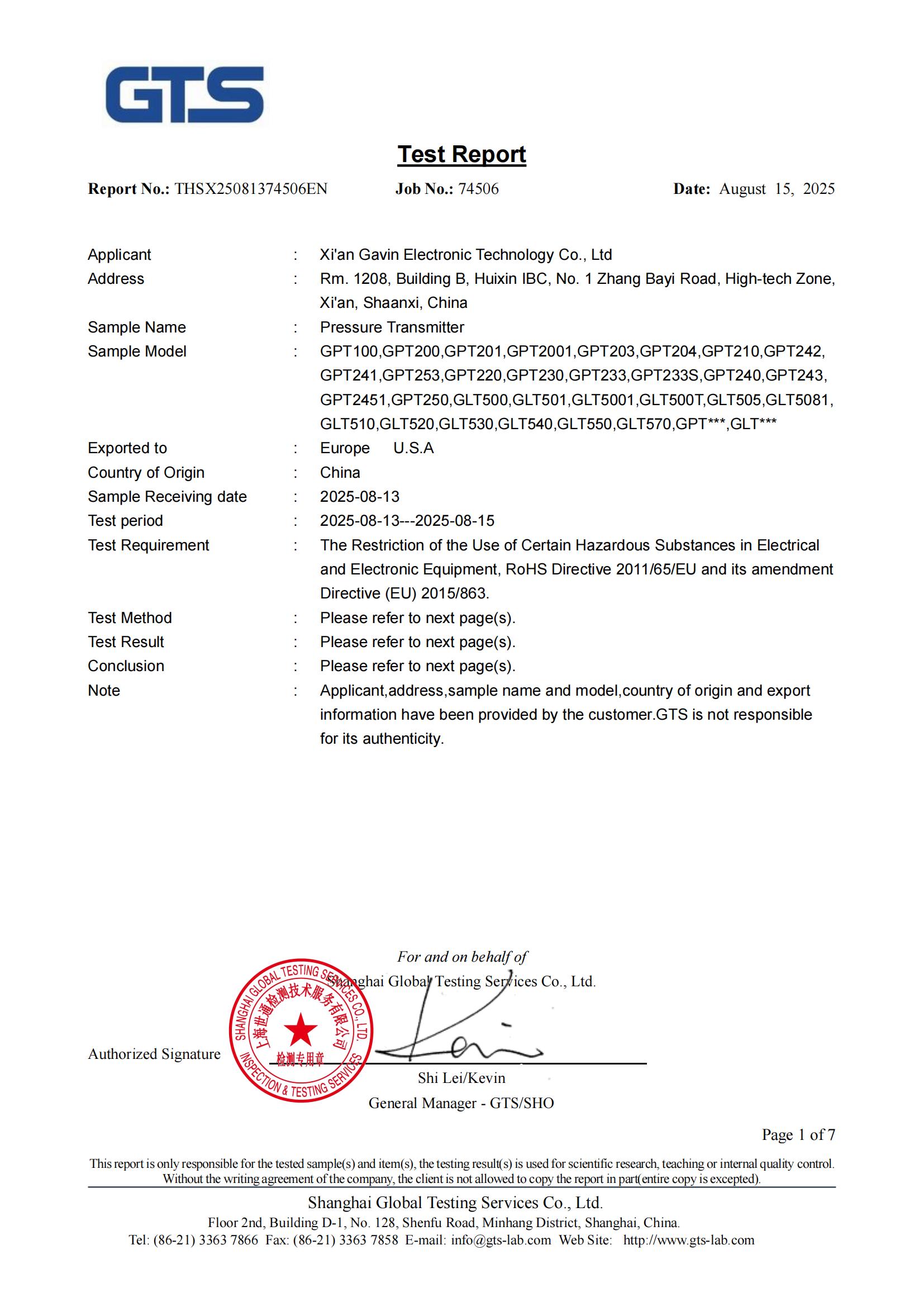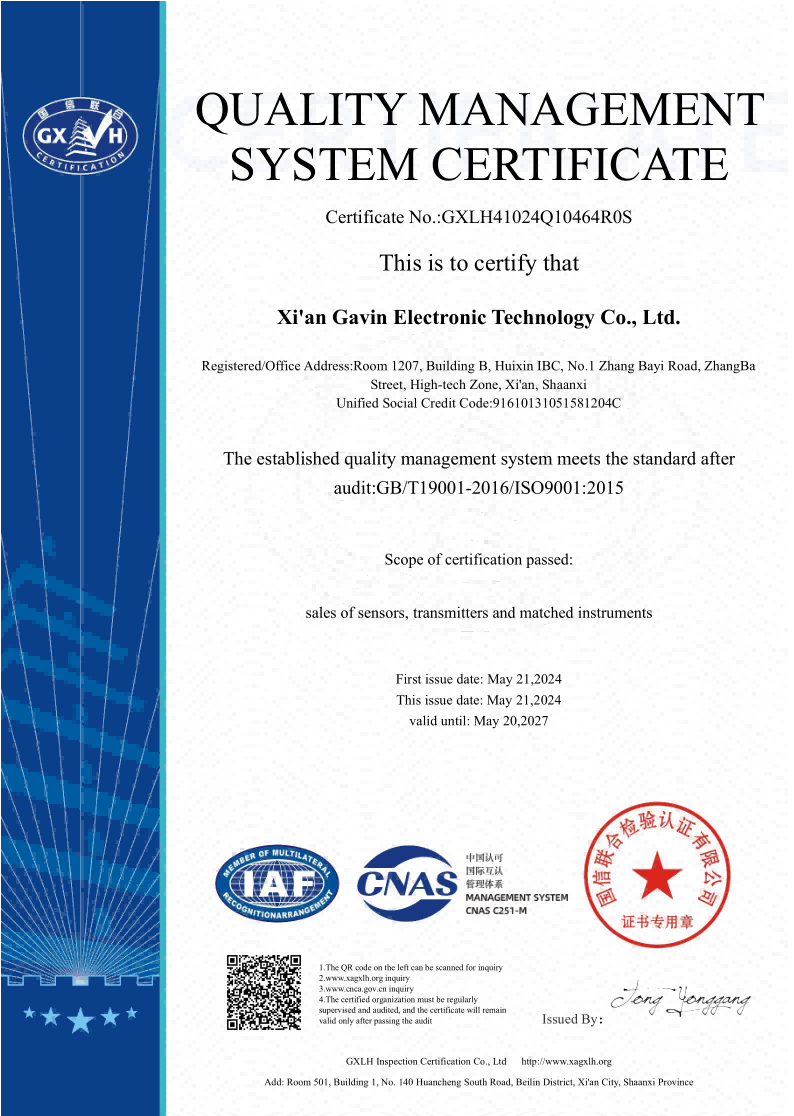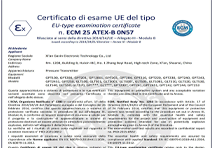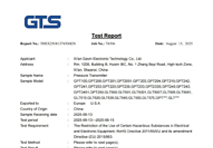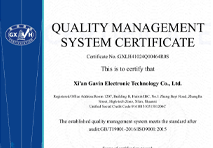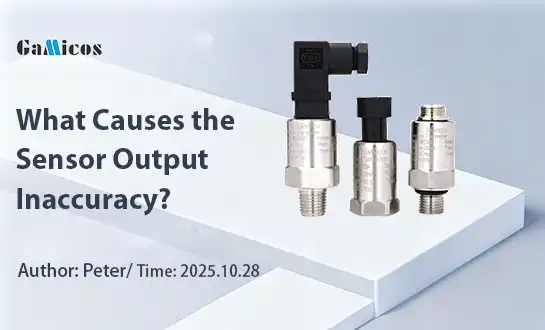Signal Interference in Industrial Sensors and How to Avoid It
Common Causes of Signal Interference in Pressure Sensors
Signal interference in industrial sensors, particularly industrial pressure sensors, can lead to inaccurate measurements and unreliable data. This issue is caused by various external factors like electromagnetic fields, temperature fluctuations, and mechanical vibrations. To mitigate these problems, proper shielding techniques, signal filtering, and strategic sensor placement are essential. By implementing these measures, industries can ensure the accuracy and reliability of their pressure sensing systems, leading to improved process control and safety in industrial environments.
Common Causes of Signal Interference in Pressure Sensors
Understanding the root causes of signal interference is crucial for effectively addressing the issue in industrial pressure sensors. Let's explore some of the most common sources of interference:
Electromagnetic Interference (EMI)
Electromagnetic interference is a significant challenge for industrial pressure sensors. EMI can originate from various sources in industrial settings, including:
- Power lines and electrical equipment
- Radio frequency (RF) transmitters
- Welding equipment
- Variable frequency drives (VFDs)
These sources emit electromagnetic fields that can induce unwanted currents in sensor circuits, leading to erroneous readings. Industrial pressure sensors are particularly susceptible to EMI due to their sensitive electronic components.
Temperature Fluctuations
Temperature changes can significantly impact the performance of industrial pressure sensors. Extreme temperatures or rapid fluctuations can cause:
- Thermal expansion or contraction of sensor components
- Changes in electrical properties of semiconductors
- Variations in fluid viscosity (for liquid-filled sensors)
These temperature-induced effects can result in measurement drift and reduced accuracy in industrial pressure sensors.
Mechanical Vibrations
Industrial environments often involve machinery that produces vibrations. These mechanical disturbances can affect pressure sensor readings by:
- Causing physical movement of sensor components
- Inducing stress on sensor elements
- Creating noise in electrical signals
Vibrations can be particularly problematic for highly sensitive industrial pressure sensors, leading to fluctuations in output signals.
Ground Loops
Ground loops occur when multiple devices share a common ground connection, but at slightly different potentials. This can result in:
- Unwanted current flow between devices
- Introduction of noise into sensor signals
- Offset errors in pressure measurements
Industrial pressure sensors connected to multiple instruments or control systems are particularly vulnerable to ground loop issues.
Chemical Corrosion
In harsh industrial environments, chemical corrosion can degrade sensor components over time, leading to:
- Changes in material properties
- Alteration of sensor geometry
- Degradation of electrical connections
These effects can cause drift in sensor calibration and ultimately result in inaccurate pressure measurements.
How to Shield Industrial Pressure Sensors from Noise?
Shielding industrial pressure sensors from noise is crucial for maintaining accuracy and reliability in measurement systems. Let's explore effective strategies to protect these sensors from various types of interference:
Electromagnetic Shielding Techniques
To safeguard industrial pressure sensors from electromagnetic interference, consider implementing the following shielding techniques:
- Faraday cages: Enclose sensors in metal housings to block external electromagnetic fields
- Conductive coatings: Apply conductive materials to sensor casings for added protection
- Shielded cables: Use cables with metallic braids or foils to prevent signal degradation
- Ferrite beads: Install these components on signal lines to suppress high-frequency noise
These methods create barriers that prevent electromagnetic waves from reaching sensitive sensor components, ensuring more accurate pressure measurements.
Proper Grounding and Isolation
Effective grounding and isolation techniques are essential for minimizing signal interference in industrial pressure sensors:
- Single-point grounding: Connect all grounds to a common point to prevent ground loops
- Isolation transformers: Use these devices to break ground loops and provide galvanic isolation
- Optical isolators: Implement these components to transmit signals without electrical connections
- Differential signaling: Utilize this method to reject common-mode noise in sensor outputs
By implementing these practices, you can significantly reduce noise and improve the overall performance of industrial pressure sensors.
Signal Filtering and Conditioning
Employing signal filtering and conditioning techniques can help remove unwanted noise from industrial pressure sensor outputs:
- Low-pass filters: Attenuate high-frequency noise while allowing lower frequency signals to pass
- High-pass filters: Remove low-frequency drift and DC offset from sensor signals
- Notch filters: Eliminate specific frequencies, such as power line interference (50/60 Hz)
- Analog-to-digital converters (ADCs) with built-in filters: Use these components for digital signal processing
These filtering methods can significantly improve the signal-to-noise ratio of industrial pressure sensors, resulting in more accurate measurements.
Environmental Controls
Managing the environment around industrial pressure sensors can help mitigate various sources of interference:
- Temperature stabilization: Use temperature-controlled enclosures or active cooling systems
- Vibration isolation: Install shock absorbers or damping materials to minimize mechanical disturbances
- Humidity control: Implement dehumidifiers or sealed enclosures to prevent moisture-related issues
- Chemical protection: Use corrosion-resistant materials or protective coatings for sensor components
By controlling these environmental factors, you can extend the life and maintain the accuracy of industrial pressure sensors in harsh industrial settings.
Strategic Sensor Placement
Carefully considering the location of industrial pressure sensors can significantly reduce interference:
- Distance from noise sources: Place sensors away from high-power electrical equipment or RF transmitters
- Orientation: Position sensors to minimize exposure to mechanical vibrations or thermal gradients
- Shielding structures: Utilize existing metal structures or install dedicated shielding panels
- Cable routing: Separate signal cables from power cables to reduce electromagnetic coupling
Proper sensor placement can prevent many interference issues before they occur, ensuring more reliable pressure measurements in industrial applications.
Best Practices for Reliable Industrial Sensor Performance
To ensure optimal performance and longevity of industrial pressure sensors, it's essential to follow best practices in their selection, installation, and maintenance. Let's explore some key strategies:
Proper Sensor Selection
Choosing the right industrial pressure sensor for your application is crucial:
- Match sensor specifications to application requirements (pressure range, accuracy, response time)
- Consider environmental factors (temperature range, chemical compatibility, ingress protection)
- Evaluate sensor technology (piezoresistive, capacitive, optical) based on specific needs
- Select sensors with built-in compensation for temperature and non-linearity
Careful selection ensures that the industrial pressure sensor is well-suited to the operating conditions and measurement requirements of your application.
Calibration and Maintenance
Regular calibration and maintenance are essential for maintaining the accuracy of industrial pressure sensors:
- Establish a calibration schedule based on sensor type and application criticality
- Use traceable calibration standards and document all calibration procedures
- Implement a preventive maintenance program to clean and inspect sensors regularly
- Monitor sensor drift over time and adjust calibration intervals as needed
These practices help ensure that industrial pressure sensors maintain their accuracy and reliability throughout their operational life.
Signal Processing and Data Analysis
Implementing advanced signal processing and data analysis techniques can improve the overall performance of industrial pressure sensors:
- Use digital signal processing (DSP) algorithms for noise reduction and signal enhancement
- Implement data fusion techniques to combine readings from multiple sensors
- Apply statistical analysis methods to identify trends and anomalies in pressure data
- Utilize machine learning algorithms for predictive maintenance and fault detection
These advanced techniques can extract more valuable information from industrial pressure sensor data, leading to improved process control and decision-making.
System Integration and Communication
Proper integration of industrial pressure sensors into larger control systems is crucial for reliable operation:
- Use industry-standard communication protocols (e.g., 4-20 mA, HART, Modbus) for compatibility
- Implement redundancy in critical measurement points to improve system reliability
- Ensure proper electrical isolation between sensors and control systems
- Configure alarm thresholds and safety interlocks based on sensor readings
Effective system integration ensures that pressure sensor data is accurately transmitted and utilized within the broader industrial control framework.
Training and Documentation
Investing in personnel training and maintaining comprehensive documentation are essential for long-term success:
- Provide training on proper sensor handling, installation, and troubleshooting
- Develop and maintain detailed documentation on sensor specifications and calibration procedures
- Create standard operating procedures (SOPs) for sensor maintenance and replacement
- Implement a system for tracking sensor performance and maintenance history
Well-trained personnel and thorough documentation contribute to the consistent and reliable operation of industrial pressure sensors across your facility.
Conclusion
Signal interference in industrial sensors, particularly in industrial pressure sensors, poses significant challenges to accurate measurements and reliable data collection in industrial settings. By understanding the common causes of interference, implementing effective shielding techniques, and following best practices for sensor selection, installation, and maintenance, industries can overcome these challenges and ensure optimal performance of their pressure sensing systems.
Key takeaways from this discussion include:
- Recognizing and addressing various sources of interference, such as electromagnetic fields, temperature fluctuations, and mechanical vibrations
- Implementing proper shielding techniques, including electromagnetic shielding, grounding, and signal filtering
- Selecting appropriate sensors for specific applications and environmental conditions
- Maintaining regular calibration and maintenance schedules
- Utilizing advanced signal processing and data analysis techniques
- Ensuring proper system integration and communication
- Investing in personnel training and comprehensive documentation
By applying these strategies, industries can significantly improve the accuracy, reliability, and longevity of their industrial pressure sensors, leading to enhanced process control, increased safety, and improved operational efficiency.
Reliable Pressure Sensing Solutions - GAMICOS
At GAMICOS, we specialize in providing cutting-edge pressure and liquid level measurement solutions for diverse industrial applications. Our range of sensors, including the advanced GPT200 general pressure transmitter, is designed to deliver accurate and reliable measurements even in challenging environments. With features like strong anti-interference capabilities, high stability, and customizable options, our sensors meet the demanding needs of industries worldwide.
As a trusted manufacturer and supplier, we offer comprehensive support from selection to after-sales service, ensuring optimal performance of your pressure sensing systems. For expert advice or to explore our industrial pressure sensor solutions, contact us at info@gamicos.com.
References
1. Johnson, R. T., & Smith, K. L. (2019). "Electromagnetic Interference Mitigation Techniques for Industrial Sensors." Journal of Industrial Instrumentation, 45(3), 267-285.
2. Patel, A., & Chang, W. (2020). "Temperature Compensation Methods in Pressure Sensing Applications." Sensors and Actuators A: Physical, 305, 111941.
3. Rodriguez, M., et al. (2018). "Vibration Effects on Pressure Sensor Performance in Industrial Environments." IEEE Transactions on Industrial Electronics, 65(8), 6355-6363.
4. Lee, S. H., & Kim, J. W. (2021). "Advanced Signal Processing Techniques for Noise Reduction in Industrial Pressure Sensors." Measurement Science and Technology, 32(6), 065007.
5. Zhang, Y., et al. (2022). "Best Practices for Industrial Sensor Calibration and Maintenance: A Comprehensive Review." ISA Transactions, 123, 232-248.

Ivy
Ivy, product consultant, has focused on sensor consultation for ten years, is proficient in providing pressure and level measurement solutions for customers.
We're here to help — submit your request anytime!
Let us know how we can help solve your pressure level measurement challenge.
Recommended Blog
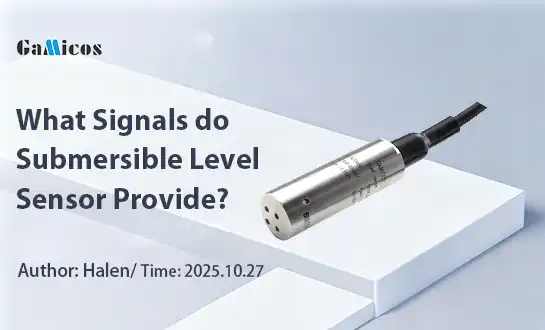
What output signals do submersible level sensors typically provide?

What output signals do submersible level sensors typically provide?

What output signals do submersible level sensors typically provide?

What output signals do submersible level sensors typically provide?
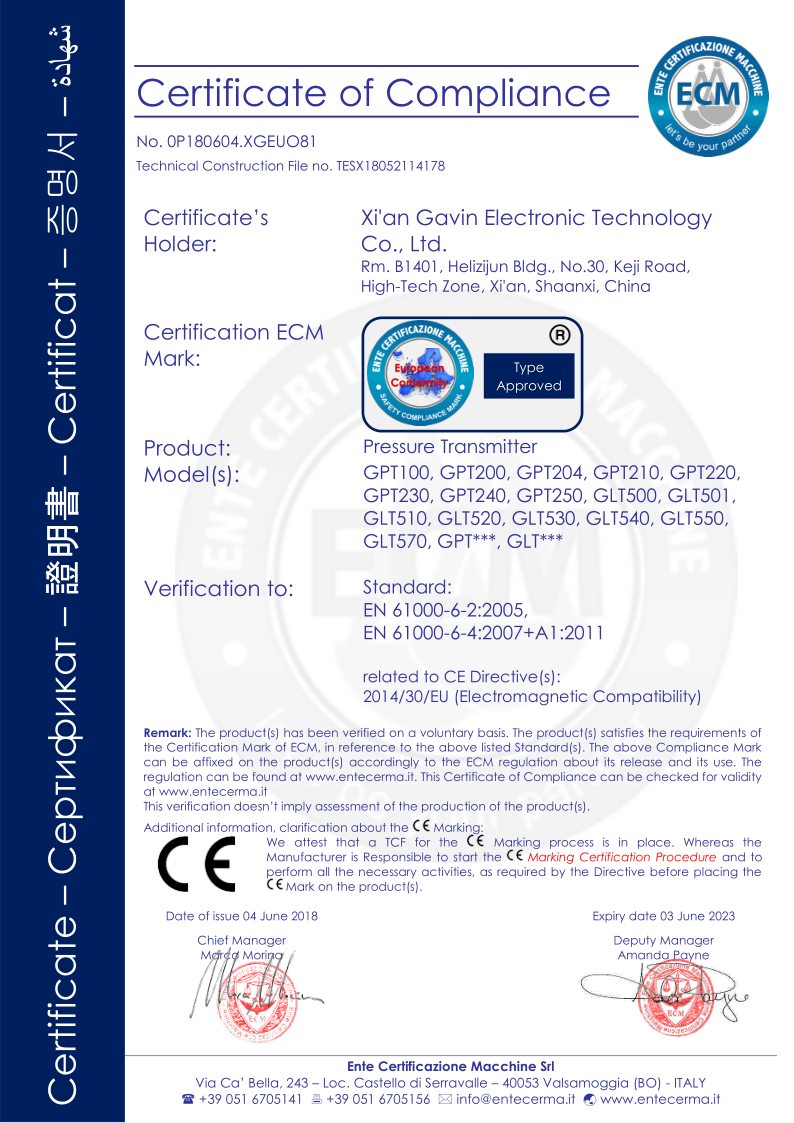
_1757930850792.jpg)
